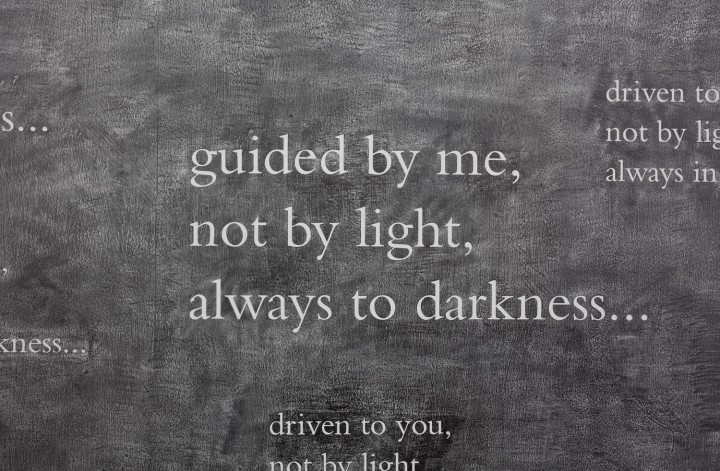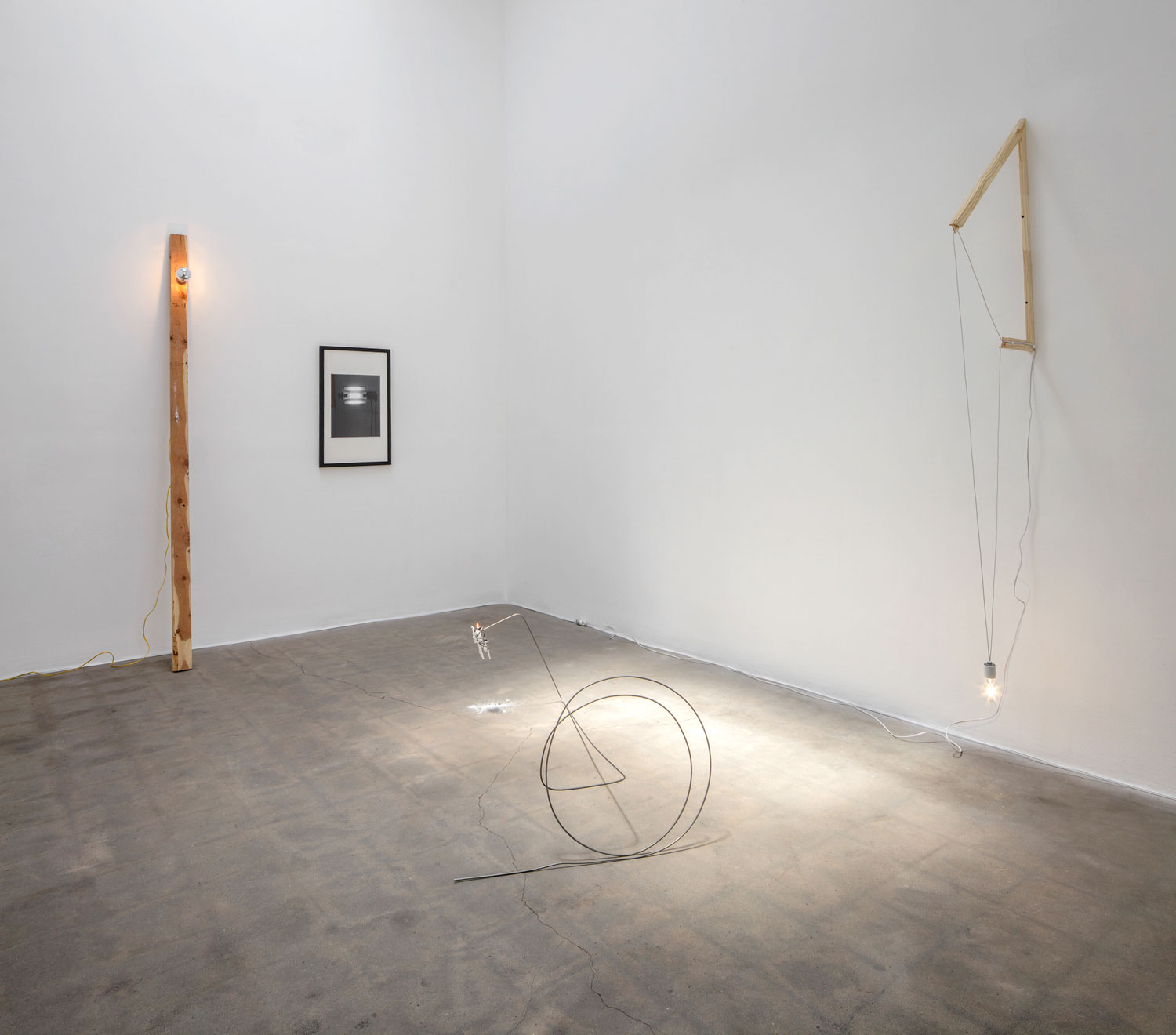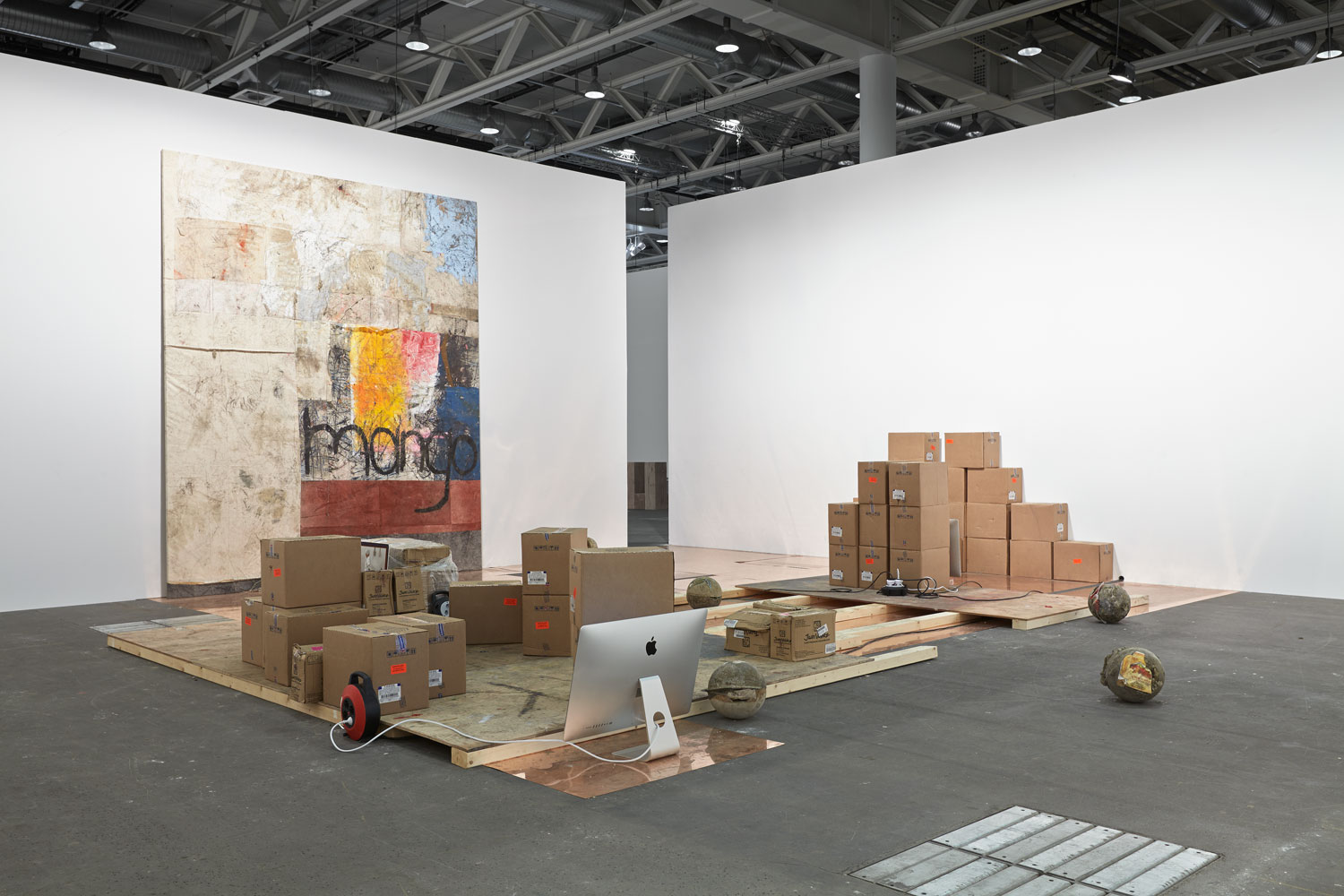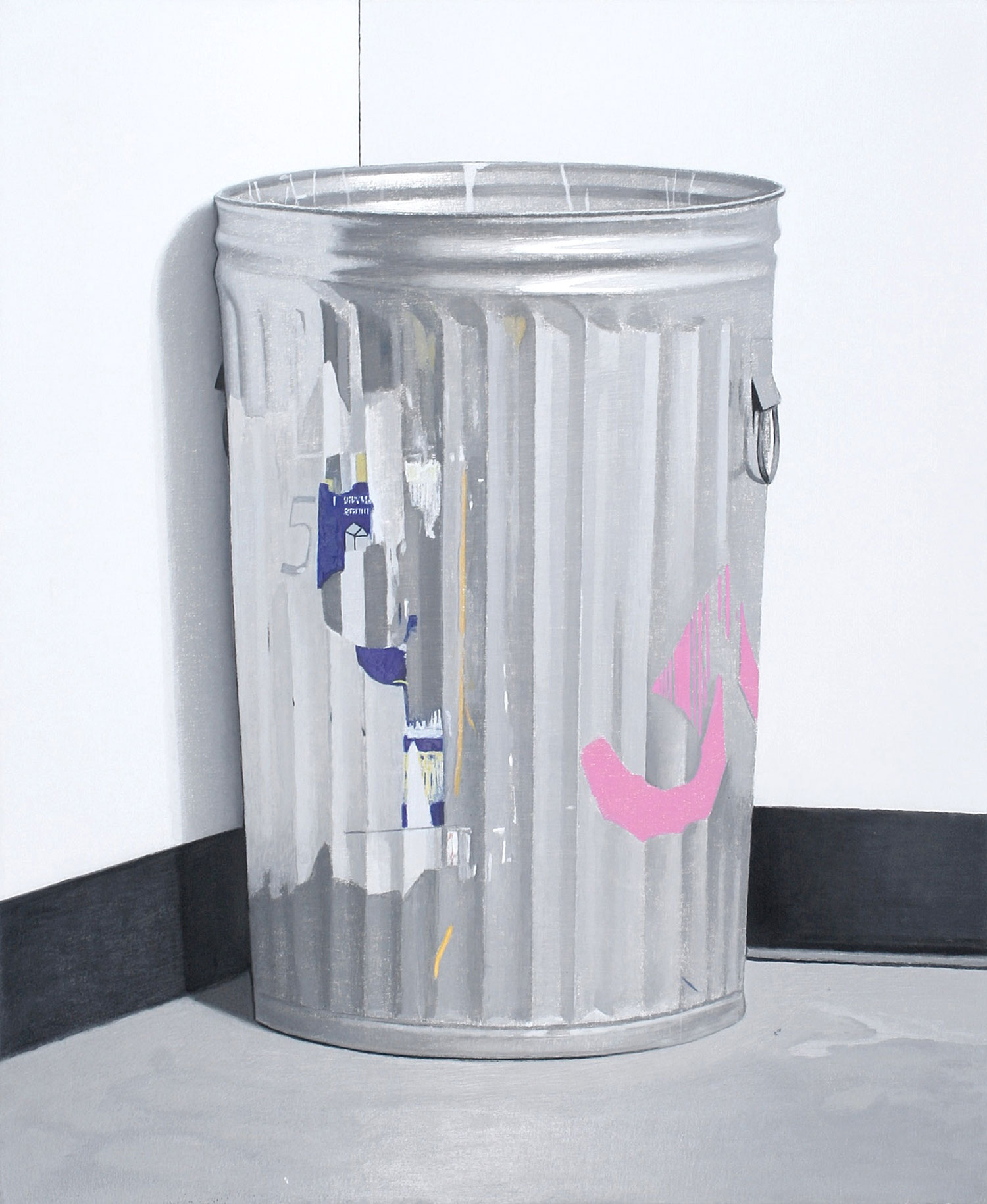
In a recent two-person exhibition with Douglas Gordon, Miroslaw Balka showed, among other works, Four Something.1 This single text work quotes a documented conversation from Claude Lanzmann’s seminal film, Shoah (1985), between the director and Martha Mikhelson, the wife of a Nazi schoolteacher in Chelmno, Poland. In the quoted exchange, Frau Mikhelson tried to recall the number of Jewish victims exterminated in Chelmno: “Four something, four hundred thousand or forty thousand.” “Four hundred thousand.” “Four hundred thousand, I remembered it had four in it.” Four Something questions the principles that ground Lanzmann’s discourse of truth, historical representation and the memory of the slaughter of Jews during World War II. The basic principle of Lanzmann’s discourse of representation (or “irrepresentability”) is the avoidance of any kind of archival image associated with the Nazi killing machine. Lanzmann relies exclusively on spoken testimony and rejects the archive — such as images or documents — as well as fact-based fiction. To some extent, Balka turns these principles on their head. He uses Frau Mikhelson’s spoken testimony as an archival resource, which he repeats in the form of a text: black vinyl numbers and letters pasted directly to the wall. According to Lanzmann, the catastrophe of the Holocaust is irrepresentable and, therefore, his categorical choice in favor of spoken testimony emphasizes a fundamental absence — a missing and impossible image — that is indicative of the irreducible totality of the catastrophe, but does not pretend to represent it. Balka transforms Frau Mikhelson’s testimony into a twisted archival image. If verbal testimony is a withdrawal from the image, then by making a new non-image out of Lanzmann’s existing non-image, Balka withdraws the withdrawal.
Balka’s gesture of distancing the already distancing testimony, negating the already negating image, echoes Shoshana Felman and Dori Laub’s conception of the Holocaust as an “event without a witness.” In their famous analysis of testimonies, they write: “Not only did the Nazis try to exterminate the physical witnesses of their crime; but the inherently incomprehensible and deceptive psychological structure of the event precluded its own witnessing even by its very victims.”2 The fact that Balka executed the work directly on the wall charges the self-erasing erasure discourse with another layer of meaning: a site-dependent gesture cannot become an object and presumes temporality, “ephemeralness” and future disappearance as its starting point.

In 2012, as part of “Intense Proximity,” Palais de Tokyo’s La Triennale, Thomas Hirschhorn presented a video work entitled Touching Reality (2012). Projected into a dark space was the image of a hand browsing through images of bloodied dead bodies on a touch screen. The images of the “destroyed human bodies,” as Hirschhorn refers to them, were taken from the live archive of the Internet. Like many of Hirschhorn’s works, this work stems from his ongoing interest in shocking images of human death — dead and mutilated bodies. It relates to the archival source differently than Lanzmann’s or Balka’s works do. With these images, Hirschhorn uses the archive while simultaneously redefining it and turning it against itself. For him, the archive becomes a practice of declassification, a figure of uncertainty and an appearance of incommensurability. Hirschhorn’s archive of dead bodies is an open catalog of images with vague provenance and origin, which emerge unexpectedly without any prior knowledge. Unobservable from a distance, these images invade the viewer’s private space as a sequence of shocks. In an explanatory text, Hirschhorn describes it as such: “To classify destroyed human bodies as victims or non-victims is an attempt to make them commensurable instead of thinking that all these bodies are incommensurable […]. It is not about images, it is about bodies […]. I am interested in Truth, Truth as such, which is not a verified fact or the ‘right information’ of a journalistic story. The truth I am interested in resists facts, opinions, comments and journalism. Truth is irreducible; therefore the images of destroyed human bodies are irreducible and resist factuality. I don’t deny facts, but I want to oppose the texture of facts today. The habit of reducing things to facts is a comfortable way to avoid touching Truth, and to resist this is a way to touch Truth.”3
Another example of a declassified and decontextualized archive is Evidence (1977), Larry Sultan and Mike Mandel’s book and exhibition. Evidence is “a collection of 85 photographs culled from the two million they examined in the files of various corporate, government and educational agencies”4 such as Bechtel Corporation, the Beverly Hills Police Department, Jet Propulsion Laboratories, the U.S. Department of the Interior, Stanford Research Institute and hundreds more. The images in Evidence lack descriptive captions, i.e. indexes. Sultan and Mandel removed them and formed an associative order of images — without any connection to their original files and without text. The sequenced archival images in Evidence reveal their undecipherable and somehow mystic character. They present us with the opacity and muteness of photographic evidence and the cryptic, inaccessible aspect of the archive. The accumulative effect of the sequence of images encourages a deconstructive view of photographic documentation. It reflects a critical approach that pulverizes “the very notion that photography was the proof of something, the support of some evidence […]. Evidence of what? Perhaps evidence only of its own ambiguity.”5

Jacques Derrida defines the archive as a desire to restore and reconstruct, both impelled by the death drive and threatened by it: “Right on what permits and conditions archivization, we will never find anything other than that which exposes to destruction […] the archive always works, and a priori, against itself.”6 Martin Honert’s sculptural body of works can be read in the context of Derrida’s definition of the archive. Honert is known for reproducing and transforming childhood photographs into enlarged realistic sculptural arrangements. The photographs are reproduced in the form of sculpture, and this reproduction subtly addresses the function of the death drive within his private archive. Works such as Photo (1993), The English Teacher (2010) and Group Photo of Perfect People (2012) are three-dimensional executions of photographs from his own childhood albums. The first shows the artist himself as a young boy, sitting in front of a table, while the other two show his schoolteachers standing in full body. These three-dimensional photographs are resurrected as zombies. Honert’s “second exposure”7 in the form of sculpture delivers a particular notion of the status of the evidential photograph, not as a retrospective document, but rather as a continuous, insistent and endlessly processed entity that cannot be overcome or voluntarily revisited. Honert’s over-realized, over-appropriated sculptural photographs cannot be kept and stored in a conventional archive. As if unleashed from the archive, their archival appearance produces lacunas in real public space, rather than analysis.
Michael Asher’s solo exhibition in the Santa Monica Museum of Art in 2008 operated as a unique kind of archive. The exhibition was a reconstruction of every floor plan used for each of the forty exhibitions that were shown at the museum since it was moved to Bergamot Station in 1998. Asher reconstructed every temporary wall of every exhibition as an open wooden or metal studded skeleton, allowing the viewer to walk through the markings of the temporary walls and, thus, phenomenologically enact the shifts between each of the exhibitions. Asher constructed a temporary archive of the museum’s exhibition program in situ, not out of location. It was not external to the place it represented. This archive occupied the original structure in which the forty recollected exhibitions (without their contents) were located — and therefore it was a temporary, internal and partial archive. There were no clear distinctions between the exhibitions it indicated, as their structures overlapped and intertwined. Asher’s decision to use skeletal construction is crucial to his unique archivization, for constructed studded skeletons can also signify a primal phase of construction and, in this sense, revert back to a time before (not after) the forty recollected exhibitions happened.

Thomas Demand’s body of work shapes its own discourse of the archive and photographic evidence in radical and unconventional modes. Demand appropriates existing historical photographic images, for example, an image of Leni Riefenstahl’s film archive, or an image of the military conference room where Count Claus von Stauffenberg tried to assassinate Hitler. He then reproduces the images in the form of colored paper models, then photographs them, and finally destroys them. The paper model is a reproduction of the historical image, and the photographed model is a reproduction of a reproduction. Demand exposes the fact that the final image is a constructed and artificial image, and thus points to the artificial and composed aspect of historical images and history as such. In his recent series — based on architectural models by architect John Lautner and entitled “Model Studies” (2012) — Demand rearranges his discourse. Demand was first introduced to the models in the archive of the Getty Research Institute during his residency there. Unlike Demand’s models, Lautner’s models are not a reproduction of evidence, but rather the evidence itself. Instead of depicting these models in their wholeness, Demand’s images are abstract fragments, blown up textural and topographic details that evade representation and are incapable of delivering the whole picture. By reinstating indexical photographic practice, Demand forgoes representational
photography.
The work Glass II (2011) by Moshe Ninio is relevant to the discourse Thomas Demand developed in relation to photographic evidence and yet it diverges from it. The work is a framed photograph of an empty glass booth: we see the booth from the inside out, and at the same time our sight is blocked by the white wall that is in front of the same glass booth. The rear frame of the booth’s opening corresponds to the frame of the print. The picture frame becomes the booth’s frame, the glass of the picture frame becomes the glass of the booth, and the wall on which the framed photograph is hung becomes the wall we see from the booth. The work is an empty mirror image of itself: a frame within a frame, a real glass pane in front of a reproduced glass pane, an imaginary wall on top of a real wall. But this object is not anonymous; it is historical evidence. It is the booth where Adolph Eichmann sat during his trial in Jerusalem in 1961. What we see in Ninio’s work is evidence (the photograph) of a piece of evidence (the booth) from a historical legal procedure that dealt with examination of evidence — a trial that triggered the question of witnessing. The fact that what we see in Glass II is associated with the evidentiality of history’s ultimate evil catastrophe re-exposes this empty non-image as an ultimate image, an ultimate reference. At the same time, this ultimate image is re-exposed as an empty mirror image of itself.





